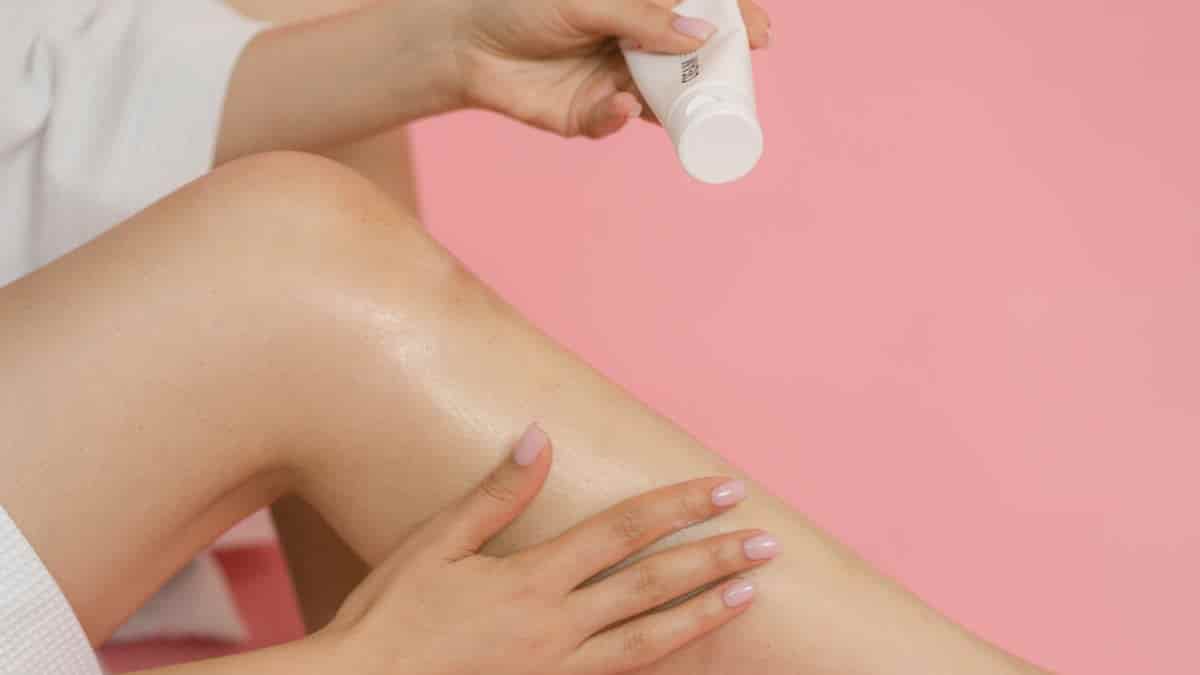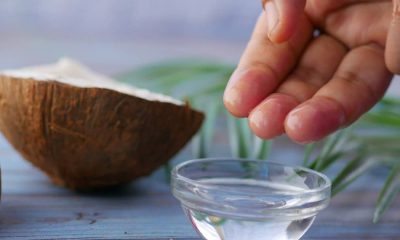Women Tips
How Long Breast Augmentation Surgery Take? A Complete Guide

Here is your complete guide to how long breast augmentation surgery
Introduction to How Long Breast Augmentation Surgery
Breast augmentation surgery is a popular cosmetic procedure that aims to enhance the size and shape of the breasts. One common question among individuals considering this surgery is, “How long does breast augmentation surgery take?” In this article, we will delve into the factors that affect the duration of the procedure, the average surgical time, pre-operative preparation, the surgical process itself, the recovery period, and address frequently asked questions about the surgery.
Breast Augmentation Procedure Steps
Here is a breakdown of the typical steps involved in a breast augmentation procedure:
| Step | Description |
|---|---|
| 1. Consultation and Evaluation | Discuss goals, evaluate health, examine breasts, and determine the most suitable approach. |
| 2. Preparing for Surgery | Follow pre-operative instructions, make necessary lifestyle adjustments, and consider medication restrictions. |
| 3. Anesthesia and Incision | Administer anesthesia for comfort and pain-free surgery, then make an incision in the chosen location. |
| 4. Implant Placement | Create a pocket for the implant, considering subglandular, submuscular, or dual-plane placement techniques. |
| 5. Closing Incisions and Recovery | Close incisions with sutures or surgical adhesive, apply dressings or special bras to support healing. |
| 6. Recovery and Post-operative Period | Observe immediate recovery in the hospital, follow post-operative care instructions for optimal healing. |
| 7. Long-term Recovery and Results | Engage in a gradual return to normal activities, attend follow-up appointments, and expect final results |
Please note that these steps are generalized, and the actual procedure may vary based on individual circumstances and surgeon preference. It is essential to consult with a qualified plastic surgeon to receive personalized guidance and information about the specific steps involved in your breast augmentation surgery.

Factors Affecting the Duration of Breast Augmentation Surgery
Several factors influence the length of time required for breast augmentation surgery. These factors include:
Complexity of the Procedure
The complexity of the surgery plays a significant role in determining the duration. Different factors that contribute to the complexity of the procedure include:
- Submuscular Placement: Placing the implants beneath the chest muscle may require additional time compared to subglandular placement.
- Multiple Incisions: If multiple incisions are necessary to achieve the desired results, it can increase the duration of the surgery.
- Combining with Other Procedures: Breast augmentation surgery may be combined with other cosmetic procedures, such as breast lift or tummy tuck. The addition of these procedures can extend the surgical time.
Implant Type and Size
The choice of implant type and size can also affect the duration of the surgery. Some considerations include:
- Saline Implants: The insertion of saline implants may take slightly less time compared to silicone implants.
- Silicone Implants: The process of placing silicone implants requires meticulous attention to detail, potentially increasing the duration of the surgery.
- Different Sizes and Shapes: If different implant sizes or shapes are used to achieve the desired outcome, it can impact the surgical time.
Surgical Technique
The surgical technique employed by the plastic surgeon can influence the duration of the procedure. Some common techniques include:
- Traditional Incision Technique: This technique involves making an incision either in the inframammary fold (under the breast), around the areola, or in the armpit.
- Endoscopic Technique: In this approach, a small camera called an endoscope is used to guide the surgeon during the surgery, which may slightly increase the duration.
- Transumbilical Technique: This technique involves making a small incision in the navel, and then using an endoscope to create a tunnel to the breast area for implant placement.
Surgeon’s Experience and Skill Level
The experience and skill level of the plastic surgeon can significantly impact the duration of the surgery. A skilled and experienced surgeon can perform the procedure more efficiently, potentially reducing the surgical time.
Average Duration of Breast Augmentation Surgery
The duration of breast augmentation surgery can vary depending on the individual case and the factors mentioned above. On average, the surgery typically takes between one to three hours. However, it is important to note that this timeframe can be shorter or longer, depending on the specific circumstances.
To provide a clearer understanding, let’s take a closer look at the average surgical time based on different factors:
| Factor | Estimated Surgical Time |
|---|---|
| Complexity of the Procedure | |
| Subglandular placement | 1-2 hours |
| Submuscular placement | 2-3 hours |
| Multiple incisions | 2-3 hours |
| Combining with other procedures | Additional time |
| Implant Type and Size | |
| Saline implants | 1-2 hours |
| Silicone implants | 2-3 hours |
| Different sizes and shapes | Additional time |
| Surgical Technique | |
| Traditional incision technique | 1-2 hours |
| Endoscopic technique | 2-3 hours |
| Transumbilical technique | 2-3 hours |
| Surgeon’s Experience and Skill Level | |
| Skilled and experienced surgeon | Potential time savings |
Pre-operative Preparation
Before undergoing breast augmentation surgery, thorough pre-operative preparation is essential. This preparation ensures optimal results and reduces the risk of complications. Key steps in pre-operative preparation include:
Consultation and Evaluation
During the initial consultation, you will discuss your goals and expectations with the plastic surgeon. They will evaluate your overall health, examine your breasts, and discuss the various aspects of the surgery. This evaluation helps determine the most suitable approach for your individual case.
Preparing for Surgery
To prepare for breast augmentation surgery, follow these guidelines:
- Pre-operative instructions: Your surgeon will provide detailed instructions regarding fasting, medication restrictions, and any necessary preparations before the surgery.
- Lifestyle adjustments and restrictions: Avoid smoking, alcohol, and certain medications that can increase the risk of complications.
- Medication and supplement considerations: Inform your surgeon about any medications or supplements you are currently taking, as some may need to be temporarily discontinued before the surgery.
On the Day of Your Breast Augmentation
Here is a table outlining what to do on the day of your breast augmentation surgery:
| Task | Description |
|---|---|
| 1. Follow Fasting Guidelines | Adhere to the fasting instructions provided by your surgeon to ensure an empty stomach before surgery. |
| 2. Take Prescribed Medications | Take any prescribed medications, such as antibiotics or pain relievers, as directed by your surgeon. |
| 3. Dress Comfortably | Wear loose, comfortable clothing that is easy to remove and put back on after surgery. |
| 4. Avoid Makeup and Jewelry | Do not wear makeup, lotions, perfumes, or jewelry on the day of the surgery to minimize infection risks. |
| 5. Arrange for Transportation | Ensure you have a reliable means of transportation to and from the surgical facility. |
| 6. Follow Hygiene Guidelines | Shower and cleanse your body with an antimicrobial soap as instructed by your surgeon. |
| 7. Remove Nail Polish | Remove nail polish or acrylic nails from at least one finger for monitoring oxygen levels during surgery. |
| 8. Bring Necessary Documents | Bring all necessary documents, such as identification, insurance information, and any completed forms. |
| 9. Follow Pre-operative Instructions | Adhere to any additional pre-operative instructions given by your surgeon, such as avoiding certain foods. |
| 10. Arrive on Time | Arrive at the surgical facility on time, allowing for check-in procedures and pre-operative preparations. |
It’s important to note that these instructions may vary depending on your surgeon’s specific requirements. Make sure to consult with your plastic surgeon and follow their personalized recommendations for the day of your breast augmentation surgery.
The Surgical Process
Breast augmentation surgery involves several stages. Let’s walk through the typical surgical process:
Anesthesia and Incision
Prior to the surgery, anesthesia is administered to ensure you are comfortable and pain-free throughout the procedure. The surgeon will make an incision, which can be placed in different locations, depending on the chosen technique and individual factors.
Implant Placement
After the incision, the surgeon will create a pocket for the implant. The placement can be subglandular (behind the breast tissue, but above the muscle), submuscular (underneath the chest muscle), or a dual-plane technique, which combines both approaches.
Closing Incisions and Recovery
Once the implants are correctly positioned, the incisions are closed using sutures or surgical adhesive. The surgeon may apply dressings or use special bras to provide support and aid in the healing process.
Recovery and Post-operative Period
After breast augmentation surgery, a proper recovery period is crucial for optimal healing and results. Here’s what you can expect during the recovery phase:
Immediate Recovery
Depending on the specific circumstances and the surgeon’s recommendations, you may stay in the hospital for a short period of observation. During this time, your vital signs will be monitored, and appropriate pain management techniques will be implemented.
Post-operative Care Instructions
To facilitate a smooth recovery, it is important to follow the post-operative care instructions provided by your surgeon. Some key instructions may include:
- Medications and pain management at home: Take prescribed medications as directed, and follow any additional pain management strategies recommended by your surgeon.
- Restrictions on physical activities: Avoid strenuous activities, heavy lifting, and exercises that put strain on the chest muscles.
- Follow-up appointments: Schedule and attend all follow-up appointments with your surgeon to monitor your progress and address any concerns.
Long-term Recovery and Results
The recovery period after breast augmentation surgery can vary from person to person. Typically, it takes several weeks to return to normal daily activities. Full recovery and the final results may take several months. It is important to maintain realistic expectations and consult with your surgeon for guidance throughout the recovery process.
Frequently Asked Questions
Here are answers to some common questions about breast augmentation surgery:
Q: How long is the recovery period after breast augmentation surgery?
A: The recovery period can vary, but most individuals can expect to resume normal activities within 4-6 weeks. Strenuous exercise and heavy lifting should be avoided for a longer period, as advised by your surgeon.
Q: Will breast augmentation surgery leave noticeable scars?
A: Incision scars are an inevitable part of any surgery. However, with proper care and the use of advanced techniques, incisions are typically well-hidden and fade over time.
Read More About the Steps of How to Apply Makeup.
Q: Can I breastfeed after breast augmentation surgery?
A: In most cases, breast augmentation surgery does not interfere with breastfeeding. However, it is important to discuss your plans for future pregnancies and breastfeeding with your surgeon during the consultation.
Read More About Home Remedies for Fungal Rashes.
Q: Are there any risks or complications associated with breast augmentation surgery?
A: Like any surgical procedure, breast augmentation carries some risks, including infection, bleeding, changes in nipple or breast sensation, implant rupture, and capsular contracture. However, these risks can be minimized by selecting a qualified and experienced plastic surgeon and following all post-operative instructions.
Read More About Avocado Oil for Tanning.
Q: How long will the results of breast augmentation surgery last?
A: Breast augmentation surgery provides long-lasting results; however, it is important to note that breast implants are not lifetime devices. Over time, you may require implant replacement or removal due to natural aging, changes in breast tissue, or personal preferences.
Read More About Fruit with High Protein.
How long does the surgery take for breast implants?
The duration of breast augmentation surgery can vary depending on several factors, including the complexity of the procedure, implant type and size, surgical technique, and the surgeon’s experience. On average, the surgery typically takes between one to three hours. However, it’s important to note that the actual time may be shorter or longer depending on the individual case.
How long is breast augmentation surgery recovery?
The recovery period after breast augmentation surgery can vary from person to person. Most individuals can expect to resume normal activities within 4-6 weeks. However, it’s important to note that everyone heals at their own pace, and the full recovery and final results may take several months. It’s essential to follow your surgeon’s post-operative care instructions and attend all scheduled follow-up appointments for proper monitoring and guidance throughout the recovery process.
Read More About How to Avoid Wedding Stress.
How soon after breast augmentation can I go home?
After breast augmentation surgery, the length of time you stay in the hospital will depend on your specific circumstances and the surgeon’s recommendations. In many cases, breast augmentation is performed on an outpatient basis, allowing you to go home the same day of the surgery. However, some individuals may need to stay in the hospital for a short period of observation. Your surgeon will provide specific instructions regarding post-operative care and when it is safe for you to go home.
Read More About Russian Lips vs Normal Filler.
How painful is breast augmentation?
Pain and discomfort levels can vary from person to person. While breast augmentation surgery does involve some post-operative pain, advancements in surgical techniques and pain management strategies have significantly improved patient comfort. Your surgeon will prescribe appropriate pain medications to help manage any discomfort during the recovery period. It’s important to follow the prescribed pain management regimen and communicate any concerns or pain levels with your surgeon, who can adjust your medication or provide additional guidance to ensure your comfort.
Read More About Gain Weight on Period.
Conclusion
Breast augmentation surgery is a transformative procedure that can enhance the size and shape of the breasts. The duration of the surgery depends on various factors such as complexity, implant type and size, surgical technique, and the surgeon’s experience. By understanding these factors and following proper pre-operative and post-operative care instructions, individuals can have a successful surgery and achieve their desired results. Remember to consult with a qualified plastic surgeon to discuss your specific goals and obtain personalized advice tailored to your needs.
Women Tips
Walnut Oil Indulgence: Culinary Bliss and Beauty Benefits

Here is your complete guide to walnut oil
Introduction to Walnut Oil
Walnut oil is a versatile and delicious oil that has been used for centuries for its culinary and medicinal properties. Derived from the nuts of the walnut tree, this oil is rich in essential fatty acids, antioxidants, and other nutrients that make it a popular choice for health-conscious consumers. In this article, we’ll explore the history, production, nutrition, and uses of walnut oil, and provide you with everything you need to know to make an informed decision about incorporating this oil into your daily routine.
History and Origin of Walnut Oil
Walnuts have been cultivated for thousands of years, with evidence of their use dating back to ancient Persia and the Mediterranean region. The oil extracted from walnuts was used for both culinary and medicinal purposes, and was highly prized for its rich flavor and health benefits.
Today, walnut oil is produced in many parts of the world, including California, France, and China. The production process involves crushing and pressing the nuts to extract the oil, which can be further refined to improve its shelf life and stability.
Nutritional Benefits of Walnut Oil
Walnut oil is a rich source of essential fatty acids, including omega-3 and omega-6 fatty acids, which are important for maintaining heart health, reducing inflammation, and supporting brain function. It also contains antioxidants, vitamins, and minerals that contribute to its overall nutritional value.
Here’s a table that summarizes the nutritional content per 100 grams:
| Nutrient | Amount |
|---|---|
| Calories | 884 |
| Total Fat | 100 g |
| Saturated Fat | 7.1 g |
| Monounsaturated Fat | 13.4 g |
| Polyunsaturated Fat | 70.4 g |
| Omega-3 Fatty Acids | 10.6 g |
| Omega-6 Fatty Acids | 59.8 g |
| Vitamin E | 14.3 mg |
| Vitamin K | 12.7 mcg |
| Phytosterols | 116 mg |
As you can see, it is high in calories and fat, but the majority of its fat content is unsaturated, making it a healthier choice than saturated fats. It’s also a good source of vitamins E and K, as well as phytosterols, which have been shown to have cholesterol-lowering effects.
Uses of Walnut Oil
This oil has a rich, nutty flavor that makes it a popular choice for both cooking and baking. It can be used as a substitute for other oils in salad dressings, marinades, and sauces, and can be used to sauté, stir-fry, or roast vegetables and meats.
Here are some tips for using walnut oil in your cooking:
- Use it as a finishing oil: Drizzle walnut oil over cooked vegetables, grilled meats, or salads for an extra burst of flavor.
- Use it in dressings: Combine this oil with vinegar, lemon juice, and herbs to make a delicious salad dressing.
- Use it in baking: Replace butter or other oils with this oil in cakes, cookies, and breads for a rich, nutty flavor.
This oil can also be used topically for its skin and hair benefits. It’s rich in antioxidants and essential fatty acids, which can help to moisturize and protect the skin, reduce inflammation, and promote collagen production. It can be used as a carrier oil for essential oils, or mixed with other ingredients to make homemade skincare products.
Here are some tips for using walnut oil topically:
- Use it as a facial oil: Mix a few drops of this oil with your favorite essential oils and apply it to your face for a hydrating and nourishing treatment.
- Use it as a hair oil: Massage walnut oil into your scalp and hair before shampooing for a deep conditioning treatment.
- Use it as a massage oil: Mix walnut oil with your favorite essential oils for a relaxing and therapeutic massage.
How to Make Walnut Oil
Making walnut oil at home is a simple process that involves crushing and pressing the nuts to extract the oil. Here’s a step-by-step guide to making your own walnut oil:
- Prepare the walnuts: Start by cracking open the walnuts and removing the shells. Rinse the nuts in cold water and let them dry.
- Crush the walnuts: Place the walnuts in a food processor or blender and pulse until they are coarsely ground.
- Press the walnuts: Transfer the ground walnuts to a nut milk bag or cheesecloth and squeeze out the oil. You can also use a hydraulic press or a manual press to extract the oil.
- Filter the oil: Pour the oil through a fine-mesh strainer or a coffee filter to remove any sediment or impurities.
- Store the oil: Transfer the oil to a dark glass bottle or jar and store it in a cool, dark place.
How to Use Walnut Oil for Skin, Hair, and Massage
Skin Benefits
This oil is known for its moisturizing properties, making it a great choice for dry, aged, and irritated skin. Regularly applying this oil on the skin can help soothe and hydrate, combating signs of early aging like fine lines and crow’s feet. Due to its heavy texture, it’s best applied at night to allow for deep nourishment without interference from sunlight or other products. Additionally, it can be beneficial for conditions like psoriasis, providing relief to extreme dry skin.
Hair Benefits
This oil offers promising benefits for hair health. Massaging lukewarm walnut oil onto the scalp can help combat hair fall and promote healthy hair growth. The rich content of omega-3 fatty acids in this oil strengthens the hair, prevents hair fall, and accelerates hair growth by nourishing the roots and shafts. It is also effective in preventing and fighting fungal infections on the scalp, providing essential nutrition and curbing infections. Regular use of this oil on the hair and scalp can prevent a flaky scalp, fight dandruff, and maintain overall hair health.
Massage Benefits
Using this oil for massage therapy can be highly beneficial. Its soothing properties make it ideal for massages, providing relaxation and nourishment to the skin. These oil massages are perfect for preventing and fighting fungal infections, as the oil soothes the affected area and provides essential nutrition to combat infections effectively. Additionally, This oil is known to promote good sleep, making it a great choice for massages before bedtime to help with conditions like insomnia.
Buying Guide
When buying this oil, it’s important to look for high-quality, cold-pressed oil that is free from additives and preservatives. Here are some factors to consider when buying this oil:
- Type of oil: Look for cold-pressed, unrefined oil that has been extracted using a mechanical press. Refined oil has been chemically treated and may contain solvents or other additives.
- Origin: Look for oil that has been sourced from high-quality nuts, such as those grown in California or France.
- Packaging: Look for walnut oil that is packaged in a dark glass bottle or jar to protect it from light and oxidation.
- Expiration date: Look for oil that has a long shelf life and is fresh.
Here’s a table that compares different types of walnut oil:
| Type of Walnut Oil | Origin | Production Method | Nutritional Value |
|---|---|---|---|
| Cold-pressed walnut oil | California, France | Mechanical pressing | High in omega-3 fatty acids and vitamin E |
| Refined walnut oil | California, France | Chemical refining | Low in nutrients but high in smoke point |
| Organic walnut oil | California, France | Organic farming and mechanical pressing | High in omega-3 fatty acids and vitamin E, free from pesticides and chemicals |
Best Recipes
It can be used in a variety of recipes, from salads to baked goods. Here are some recipe ideas to get you started:
- Salad Dressing: Combine 1/4 cup walnut oil, 2 tablespoons apple cider vinegar, 1 tablespoon Dijon mustard, 1 tablespoon honey, and salt and pepper to taste.
- Roasted Vegetables: Toss your favorite vegetables in 2 tablespoons oil, salt, and pepper, and roast in the oven at 400°F for 20-25 minutes.
- Brownies: Replace the butter in your favorite brownie recipe with this oil for a rich, nutty flavor.
Comparison of Walnut with Other Oils
Here’s the table comparing walnut with other oils based on their chemical composition, nutritional value, and oxidative stability:
| Oil | Specific Gravity (15 °C) | Refractive Index (25 °C) | Acid Value | Saponification Value | Iodine Value | Unsaponifiable Matter (g/100) |
|---|---|---|---|---|---|---|
| Walnut Oil | 0.918 | 1.45 | 0.7 | 192 | 152 | 0.8 |
| Olive Oil | 0.914 | 1.47 | 0.5 | 195 | 80 | 0.5 |
| Sunflower Oil | 0.920 | 1.47 | 0.3 | 190 | 130 | 0.3 |
| Soybean Oil | 0.921 | 1.47 | 0.5 | 195 | 125 | 0.3 |
| Flaxseed Oil | 0.925 | 1.47 | 0.3 | 190 | 180 | 0.3 |
Nutritional Value of Walnut vs. Other Oils
| Oil | Calories (per 100g) | Total Fat (per 100g) | Saturated Fat (per 100g) | Monounsaturated Fat (per 100g) | Omega-3 Fatty Acids (per 100g) |
|---|---|---|---|---|---|
| Walnut Oil | 884 | 100g | 7.1g | 13.4g | 10.6g |
| Olive Oil | 884 | 100g | 14g | 73g | 0.7g |
| Sunflower Oil | 884 | 100g | 10g | 20g | 0.1g |
| Soybean Oil | 884 | 100g | 15g | 23g | 1.9g |
| Flaxseed Oil | 884 | 100g | 6g | 22g | 53g |
FAQs about Walnut Oil
What is the smoke point of walnut oil?
The smoke point of this oil is around 320°F, which makes it suitable for low- to medium-heat cooking.
Read Also: Yellow Nail Designs.
Can I use walnut oil for frying?
While you can use walnut oil for frying, it’s not recommended due to its low smoke point and high price.
Read Also: Neck Botox.
Is walnut oil safe for pregnant women?
It is generally safe for pregnant women, but it’s always best to consult with a healthcare provider before making any dietary changes.
Read Also: Thermage Before and After.
How long does walnut oil last?
This oil can last for up to 12 months if stored properly in a cool, dark place.
Read Also: Lash Extension Styles.
Can I use walnut oil on my skin?
Yes, it is rich in antioxidants and essential fatty acids, which make it a great choice for skin care.
Read Also: Pull Ups While Pregnant.
Conclusion
Walnut oil is a versatile and delicious oil that offers a range of health and culinary benefits. Whether you’re using it for cooking, baking, or skincare, it’s important to choose high-quality, cold-pressed oil that is free from additives and preservatives. By following the tips and guidelines outlined in this article, you can enjoy all the benefits of this oil and incorporate it into your daily routine.
Read Also: Marula Oil for Hair.
Women Tips
Warming Lube Excellence: Choosing the Perfect Lubricant

Here is your complete guide to warming lube
Introduction to warming lube
In the realm of sexual exploration and intimacy, finding the right lubricant can significantly enhance pleasure and comfort. Among the myriad options available, warming lube stands out as a thrilling choice, offering a tantalizing sensation that heightens arousal and excitement. In this comprehensive guide, we’ll delve into the world of warming lube, exploring its benefits, how it works, the top products on the market, safety considerations, and more.
Understanding Warming Lubricants
Before we dive into the benefits and safety considerations of warming lubes, let’s first define what they are. Warming lubricants are products that contain ingredients that create a warming sensation when applied to the skin. This sensation can range from a mild warmth to a more intense heat, depending on the product and the amount used.
There are two main types of warming lubes: heating and cooling. Heating lubes are designed to create a warming sensation, while cooling lubes create a cooling sensation. Warming lubes are often preferred by those who want to enhance their intimate experiences, while cooling lubes are often used for pain relief or to reduce discomfort during intercourse.
Warming lubes can come in different formulas, including water-, silicone-, and oil-based. Water-based lubes are the most common and are safe to use with condoms and sex toys. Silicone-based lubes are longer-lasting and can be used in water, but they are not safe to use with silicone sex toys. Oil-based lubes are not recommended for use with condoms as they can cause them to break.
Ingredients and Safety Considerations
When it comes to warming lubes, it’s important to choose high-quality products that are safe and effective. Some common active ingredients found in warming lubes include capsaicin, menthol, and cinnamon. These ingredients work by stimulating the nerve endings in the skin, creating a warming sensation.
While warming lubes can be a fun addition to your intimate experiences, it’s important to be aware of potential side effects or allergies associated with specific ingredients. For example, some people may be allergic to capsaicin, which can cause a burning or stinging sensation. It’s always a good idea to test a small amount of the product on your skin before using it during intercourse.To ensure your safety and enjoyment, here are some tips for selecting safe and effective warming lubes:
- Choose products from reputable brands that use high-quality ingredients
- Read product labels carefully to check for potential allergens or irritants
- Test a small amount of the product on your skin before using it during intercourse
- Avoid using warming lubes if you have sensitive skin or a history of allergies
- Use only the recommended amount of product and follow the manufacturer’s instructions for use
Benefits of Using Warming Lubricants
Now that we’ve covered the basics of warming lubes, let’s explore some of the benefits they can provide during intimacy. Here are some of the ways that warming lubes can enhance your sexual experiences:
- Enhanced sensation: Warming lubes can create a heightened sense of pleasure and intimacy by increasing blood flow and sensitivity in the genital area.
- Improved comfort: For those who experience discomfort or pain during intercourse, warming lubes can provide relief and make the experience more enjoyable.
- Increased relaxation: The warmth created by warming lubes can help to relax the muscles in the genital area, making intercourse more comfortable and enjoyable.
How to Use Warming Lubricants Safely and Effectively
To get the most out of your warming lube experience, it’s important to use them safely and effectively. Here are some tips for proper application and use:
- Apply a small amount of lube to the genital area and massage gently to spread the product evenly.
- Start with a small amount of product and gradually increase as desired.
- Avoid using warming lubes on broken or irritated skin.
- Do not use warming lubes with condoms made of certain materials, such as lambskin or polyurethane.
- Clean up any excess product after use with warm water and soap.
Top Brands and Products
There are many brands and products on the market that offer warming lubes. To help you make an informed decision, we’ve compiled a list of some of the top brands and products based on customer reviews and ratings.
| Brand | Product | Type | Rating |
|---|---|---|---|
| Durex | Play Warming | Water-based | 4.5/5 |
| K-Y | Yours+Mine Couples Lubricant | Water-based | 4/5 |
| Astroglide | Warming Liquid | Water-based | 4/5 |
| System JO | Warming Personal Lubricant | Water-based | 4/5 |
| Wet | Warming Gel Lubricant | Water-based | 4/5 |
Side Effects of Warming Lube
| Side Effect | Description |
|---|---|
| Burning or stinging sensation | Some people may experience a burning or stinging sensation when using warming lubes, especially if they are allergic to specific ingredients. |
| Skin irritation | Warming lubes can cause skin irritation in some people, especially those with sensitive skin. |
| Allergic reactions | Some people may be allergic to specific ingredients found in warming lubes, such as capsaicin or cinnamon. Symptoms of an allergic reaction can include itching, redness, and swelling. |
| Increased risk of infection | Using warming lubes can increase the risk of infection, especially if they contain glycerin or other ingredients that can promote bacterial growth. |
Costs of Warming Lube
| Product | Type | Average Cost |
|---|---|---|
| Durex Play Warming | Water-based | $10-15 |
| K-Y Yours+Mine Couples Lubricant | Water-based | $15-20 |
| Astroglide Warming Liquid | Water-based | $12-18 |
| System JO Warming Personal Lubricant | Water-based | $15-25 |
| Wet Warming Gel Lubricant | Water-based | $10-15 |
Frequently Asked Questions (FAQs)
Here are some of the most commonly asked questions about warming lubes:
What are the differences between warming and regular lubes?
Warming lubes contain ingredients that create a warming sensation when applied to the skin, while regular lubes do not.
Are there any risks associated with using warming lubes?
While warming lubes are generally safe to use, some people may experience side effects or allergic reactions to specific ingredients. It’s always a good idea to test a small amount of the product on your skin before using it during intercourse.
Read Also: Tom Ford Amber Absolute.
Can I use warming lubes with condoms or sex toys made of certain materials?
Warming lubes are safe to use with most condoms and sex toys, but they should not be used with condoms made of certain materials, such as lambskin or polyurethane.
Read Also: White Rain Perfume.
Do warming lubes have any negative side effects?
Some people may experience a burning or stinging sensation when using warming lubes, especially if they are allergic to specific ingredients.
Read Also: Tea Tree Oil Face Oil.
Is it normal to experience increased sensitivity when using warming lubes?
Yes, warming lubes are designed to increase blood flow and sensitivity in the genital area, which can enhance pleasure and intimacy.
Read Also: Pull Ups While Pregnant.
Conclusion
Warming lubes can be a fun and exciting addition to your intimate experiences. By choosing high-quality products and using them safely and effectively, you can enhance pleasure, improve comfort, and increase relaxation during intercourse. So why not add some extra heat to your next intimate encounter with a warming lube?
Read Also: Grande Mascara.
Women Tips
Soft Water vs Hard Water Shower: Skin Bliss Beyond Hard Woes!

Here is your complete guide to soft water vs hard water shower
Introduction to Soft Water vs Hard Water Shower
Soft water and hard water are two types of water that have different properties and effects on our daily lives, especially when it comes to showering. In this article, we will explore the differences between soft water and hard water, their advantages and disadvantages, and how to choose the right shower setup for your needs.
Differences between Soft Water and Hard Water
Definition
Soft water is lower in minerals than hard water but has a higher sodium content, which can make it taste salty1. Hard water, on the other hand, contains higher levels of minerals like calcium, iron, and magnesium1.
Effects on Skin and Hair
Soft water is gentler on skin and hair, as it doesn’t leave soap scum or spots on dishes and glasses after washing1. Hard water, however, can cause dry skin and hair, as well as buildup on shower screens and other surfaces1.
Measuring Water Hardness
Water hardness is measured by the concentration of minerals like calcium carbonate, given in parts per million (ppm) or Clark’s degrees (˚Clark)1. If water has 100ppm or higher, it’s officially classified as hard water3.
Mineral Content in Soft and Hard Water
| Water Type | Calcium (ppm) | Magnesium (ppm) |
|---|---|---|
| Soft Water | 10 | 5 |
| Hard Water | 150 | 80 |
Effects on Skin and Hair
The battle between soft water vs hard water shower becomes most apparent when we assess their impact on our skin and hair.
- Soft Water Benefits:
- Skin feels softer and more hydrated
- Hair maintains natural oils, resulting in shine
- Ideal for those with sensitive skin conditions
- Hard Water Challenges:
- Strips skin of natural oils, causing dryness
- Hair becomes brittle and prone to breakage
- Exacerbates skin conditions like eczema
Effects on Skin and Hair
| Aspect | Soft Water Effect | Hard Water Effect |
|---|---|---|
| Skin Condition | Hydrated and smooth | Dry and prone to irritation |
| Hair Appearance | Shiny and manageable | Dull and susceptible to breakage |
| Sensitivity Impact | Gentle on sensitive skin | Aggravates skin conditions like eczema |
Impact on Shower Equipment
Your shower equipment isn’t immune to the effects of water quality. Let’s explore how soft water vs hard water influences your shower space.
- Scale Buildup in Hard Water:
- Accumulation of mineral deposits on showerheads and faucets
- Reduces water flow and efficiency
- Requires regular cleaning and maintenance
- Corrosion Risks in Soft Water:
- Soft water’s low mineral content may lead to corrosion
- Requires non-corrosive materials for shower equipment
- Periodic checks for any signs of wear and tear
Pros and Cons of Soft Water and Hard Water Showers
Soft Water Showers
Advantages:
- Gentler on skin and hair
- Easier to produce a foamy lather2
- Less buildup on shower screens and other surfaces1
Disadvantages:
- Higher sodium content can make water taste salty1
- May require a water softener for optimal performance2
Hard Water Showers
Advantages:
Disadvantages:
Soft Water vs Hard Water Showerheads
Soft Water Showerheads
Hard Water Showerheads
Soft Water vs Hard Water Shower Filters
Soft Water Shower Filters
- Remove excess sodium and other impurities4
- Can be used with a water softener for optimal performance2
Hard Water Shower Filters
Cost Considerations
Financial considerations often sway decisions:
- Cost of Water Softening Systems:
- Initial investment for softeners
- Potential long-term savings on skincare and haircare products
- Evaluate cost-effectiveness based on your water type and consumption
FAQs
What is the difference between soft water and hard water?
Soft water has lower mineral content and higher sodium content, while hard water has higher mineral content1.
How does water hardness affect showering?
Hard water can cause dry skin and hair, as well as buildup on shower screens and other surfaces1.
What are the advantages of soft water showers?
Gentler on skin and hair, easier to produce a foamy lather, and less buildup on shower screens and other surfaces2.
What are the disadvantages of soft water showers?
Higher sodium content can make water taste salty, and may require a water softener for optimal performance2.
What are the advantages of hard water showers?
Natural minerals can be beneficial for skin and hair, and no need for a water softener2.
What are the disadvantages of hard water showers?
Can cause dry skin and hair, and buildup on shower screens and other surfaces1.
Read Also: Summer Pink Nails.
What are the best showerheads for soft water?
Suitable for low-mineral water and can be used with a water softener for optimal performance.
Read Also: Fall Ombre Nails.
What are the best showerheads for hard water?
Suitable for high-mineral water and no need for a water softener2.
Read Also: Natural Brown Makeup.
What are the best shower filters for soft water?
Remove excess sodium and other impurities and can be used with a water softener for optimal performance.
Read Also: Makeup Pink Hair Hacks.
What are the best shower filters for hard water?
Remove excess minerals and impurities and no need for a water softener2.
Read Also: Butt Blasting.
Conclusion
In conclusion, the choice between a soft water and hard water shower depends on your personal preferences and needs. Soft water showers are gentler on skin and hair, while hard water showers can provide natural minerals for skin and hair. When choosing a shower setup, consider factors such as water hardness, showerhead type, and shower filter type to ensure the best experience for your needs.
Read Also: Pink and Yellow Eye Makeup.
-

 Beauty Tips1 year ago
Beauty Tips1 year agoWhat Is Balayage: Your Ultimate Guide Is Here
-

 Dreams Interpretation1 year ago
Dreams Interpretation1 year agoThe Meaning of Teeth Falling Out in a Dream: Exploring the Symbolism
-

 Diet Tips1 year ago
Diet Tips1 year agoWhat Vitamins C Is Good For? The Ultimate Guide
-

 Uncategorized1 year ago
Uncategorized1 year agoUnderstanding the Five Languages of Love: A Comprehensive Guide
-

 Beauty Tips11 months ago
Beauty Tips11 months agoHow to Make Clear Skin: Your Comprehensive Guide
-

 Beauty Tips11 months ago
Beauty Tips11 months agoCoconut Oil in Face Benefits: Unlocking the Secrets to Radiant Skin
-

 Beauty Tips1 year ago
Beauty Tips1 year agoThe Surprising Benefit to Coconut Oil: Your Complete Guide
-

 Women Tips1 year ago
Women Tips1 year agoAre You People Pleaser? Your Complete Guide



























